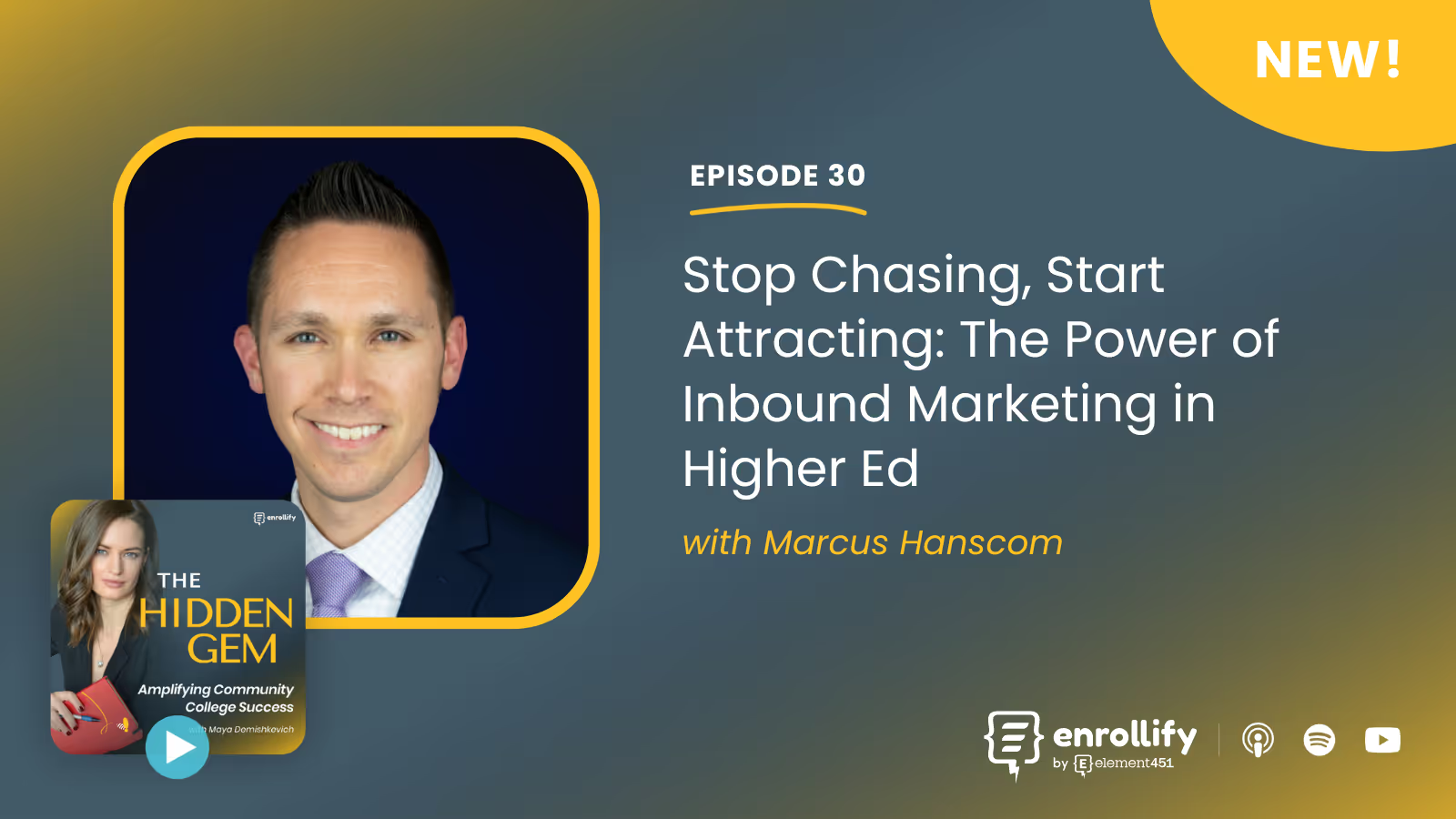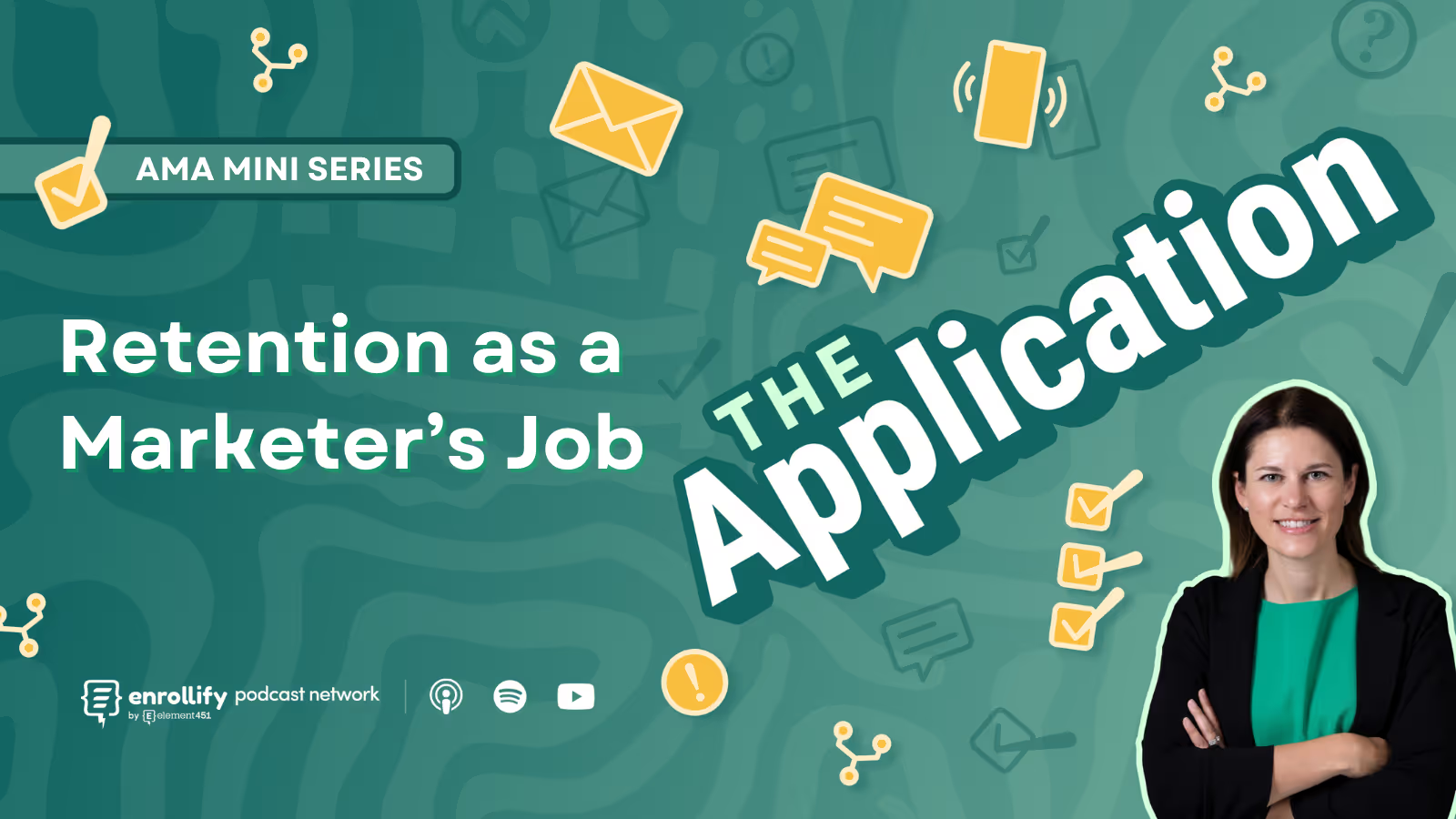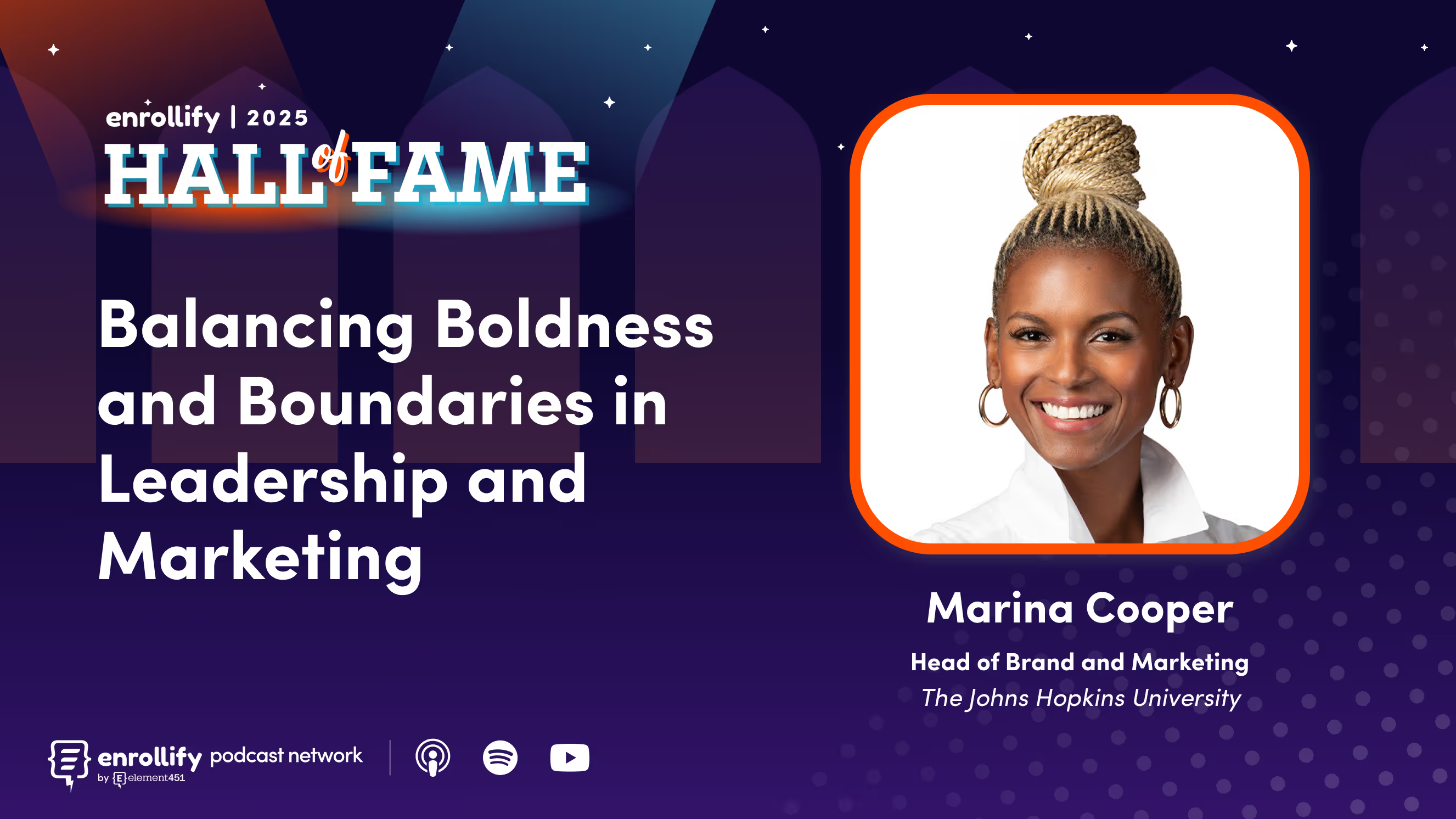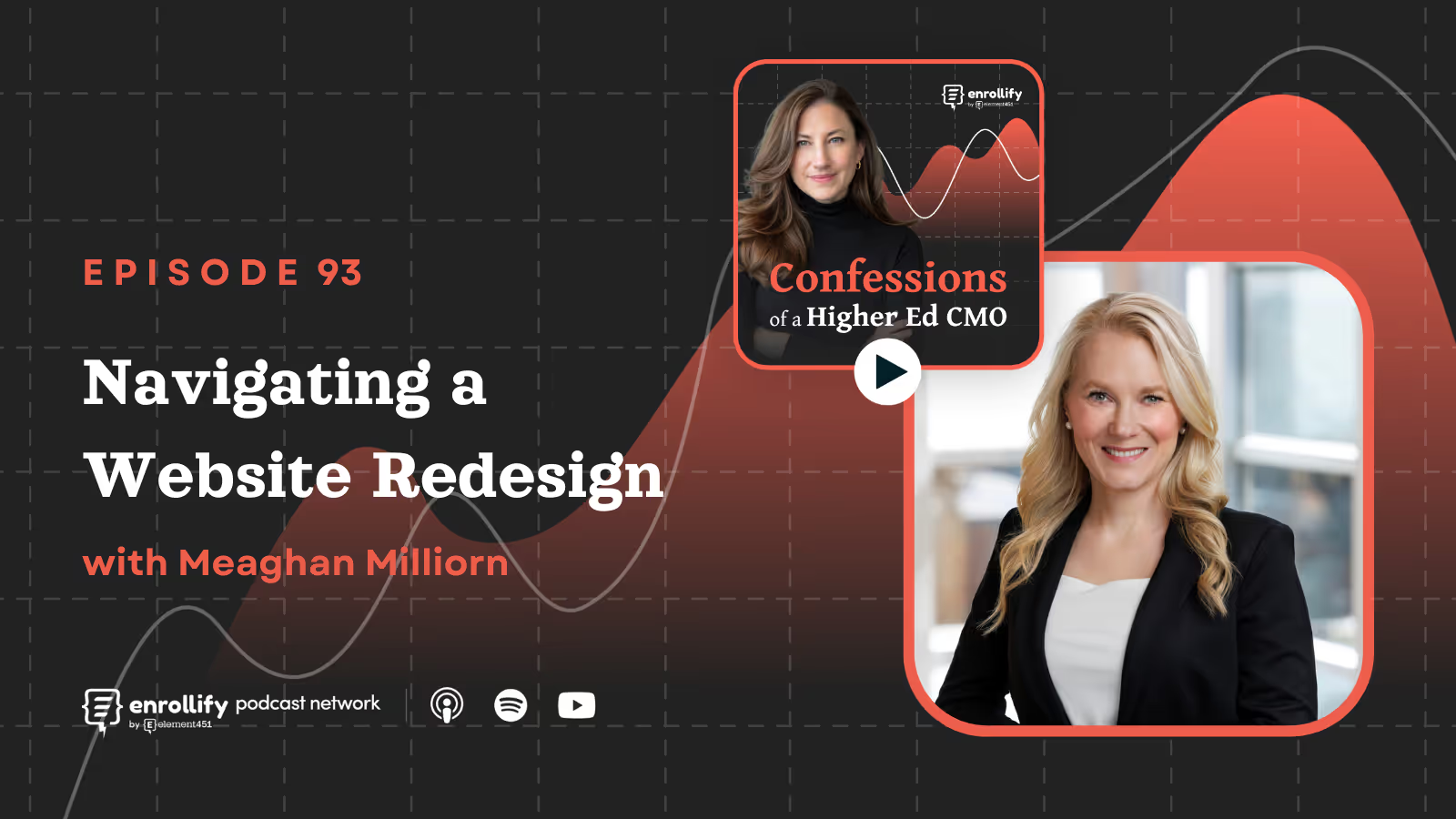About the Episode
Got a story to tell? An innovative idea to share? Fill out our guest nomination form and let's chat!
About the Episode:
In this episode of The Hidden Gem, host Maya Demishkevich sits down with Marcus Hanscom, an expert in higher ed marketing, to demystify inbound marketing and its impact on student engagement and enrollment. Many institutions focus on traditional advertising, but Marcus explains why inbound marketing - a strategy centered on attracting students through valuable, relevant content - is the key to long-term enrollment success.
From content marketing to SEO, paid advertising, and AI-powered content creation, this episode breaks down how colleges can build an inbound strategy in-house without massive budgets. If your institution is looking to move beyond "spray and pray" advertising and develop marketing that works smarter, not harder, this episode is packed with actionable insights.
Key Takeaways:
- Learn how inbound marketing differs from traditional marketing and why it’s a more effective long-term strategy.
- Discover how to develop an inbound marketing strategy in-house, even with limited resources.
- Hear why content marketing isn’t just about news and rankings—it’s about answering student questions at different stages of their decision-making journey.
- Find out how paid advertising and inbound marketing work together to create a more cost-effective, engagement-driven recruitment approach.
- Explore the role of AI in content creation—how to use it wisely and avoid SEO penalties for generic, AI-generated content.
- Understand why student personas and SEO research are critical to creating content that attracts the right students and drives conversions.
Whether you’re a college marketer, enrollment leader, or administrator, this episode will challenge how you think about student recruitment and show you how inbound marketing can work for your institution.
What is Inbound Marketing, and Why Should Higher Ed Leaders Care?
Inbound marketing is often misunderstood, especially in higher education, where traditional advertising and direct recruitment tactics still dominate. Marcus describes inbound marketing as a "magnet" rather than a "megaphone"—it attracts students by answering their questions rather than pushing messages at them. While digital marketing can be highly targeted, it is still interruptive. Inbound, on the other hand, aligns with student intent, helping institutions engage prospects when they are actively seeking information.
A prime example is a prospective student searching, "What can I do with an associate’s degree in healthcare?" Instead of relying solely on ads, an institution can create blog content, downloadable guides, and interactive tools to provide useful information—positioning itself as the best-fit choice when the student is ready to decide.
Inbound Marketing vs. Content Marketing: What’s the Difference?
Many higher ed marketers mistakenly equate inbound marketing with content marketing. While related, inbound marketing is the overarching strategy that includes content marketing as one of its tools. Content marketing focuses on creating blogs, videos, and guides, but inbound goes beyond that—it nurtures leads through personalized engagement, call-to-action pathways, and conversion tactics.
Marcus emphasizes the importance of structuring content around the student journey. Institutions must create resources that address student concerns at each stage—awareness (broad education topics), consideration (institutional comparisons), and decision (program-specific details and application guidance). The key to inbound success is conversion—providing clear next steps, whether it's downloading a guide, signing up for an event, or connecting with an advisor.
How Does Inbound Marketing Compare to Paid Advertising?
Marcus clarifies that inbound and paid advertising are not mutually exclusive. While paid ads can drive immediate traffic, they are costly and stop working once the budget runs out. In contrast, inbound marketing builds long-term value through SEO and organic engagement.
When used strategically, paid ads should do more than just promote "Apply Now" calls to action. Instead, they should drive students to valuable resources, such as:
- Interactive quizzes that help students explore career options
- Downloadable guides about the benefits of a community college education
- Event registrations or virtual open house invitations
By integrating inbound elements into paid campaigns, institutions can lower their cost per lead while increasing engagement and conversion rates.
How Can Colleges Develop an Inbound Marketing Strategy In-House?
For institutions with limited resources, Marcus recommends starting with:
- Building personas – Understand who your prospective students are and what challenges they face. Common personas include recent high school graduates, working adults seeking career advancement, and non-traditional students exploring degree pathways.
- Mapping content to the student journey – Use a structured approach to create content for each stage (awareness, consideration, decision).
- Utilizing SEO research – Free tools like Google Keyword Planner can help identify the most-searched questions and terms related to community college education.
- Leveraging AI tools like ChatGPT – While AI-generated content should not be copied verbatim, it can be a powerful brainstorming tool to accelerate content creation.
What Are the Risks of Over-Reliance on AI-Generated Content?
With AI tools like ChatGPT making content creation easier than ever, colleges must be mindful of quality and originality. Marcus warns against simply generating generic guides, as Google is becoming more adept at detecting AI-driven content.
Instead, institutions should:
- Use AI as a starting point, then refine content to match their unique brand voice and institutional expertise.
- Ensure content is informative, engaging, and actionable rather than just keyword-stuffed.
- Regularly audit and update website content to maintain accuracy and relevance.
Why is Inbound Marketing a Long-Term Growth Strategy?
Inbound marketing doesn’t yield instant results, but it builds momentum over time. Marcus shares an example of a client who went from zero blog traffic to 5,000+ organic visitors per month within three years—all from a well-planned inbound strategy.
Inbound assets, such as blog articles, downloadable guides, and pillar pages, continue to attract and engage prospective students long after their initial creation. Unlike advertising, which requires continuous budget investment, inbound marketing compounds in value and enhances an institution’s credibility and visibility online.
Connect With Our Host:
About The Enrollify Podcast Network:
The Hidden Gem: Marketing Community Colleges is a part of the Enrollify Podcast Network. If you like this podcast, chances are you’ll like other Enrollify shows too!
Some of our favorites include Visionary Voices: The College President’s Playbook and Confessions of a Higher Ed CMO.
Enrollify is produced by Element451 — the next-generation AI student engagement platform helping institutions create meaningful and personalized interactions with students. Learn more at element451.com.
Attend the 2025 Engage Summit!
The Engage Summit is the premier conference for forward-thinking leaders and practitioners dedicated to exploring the transformative power of AI in education.
Explore the strategies and tools to step into the next generation of student engagement, supercharged by AI. You'll leave ready to deliver the most personalized digital engagement experience every step of the way.
👉🏻 Register now to secure your spot in Charlotte, NC, on June 24-25, 2025!















